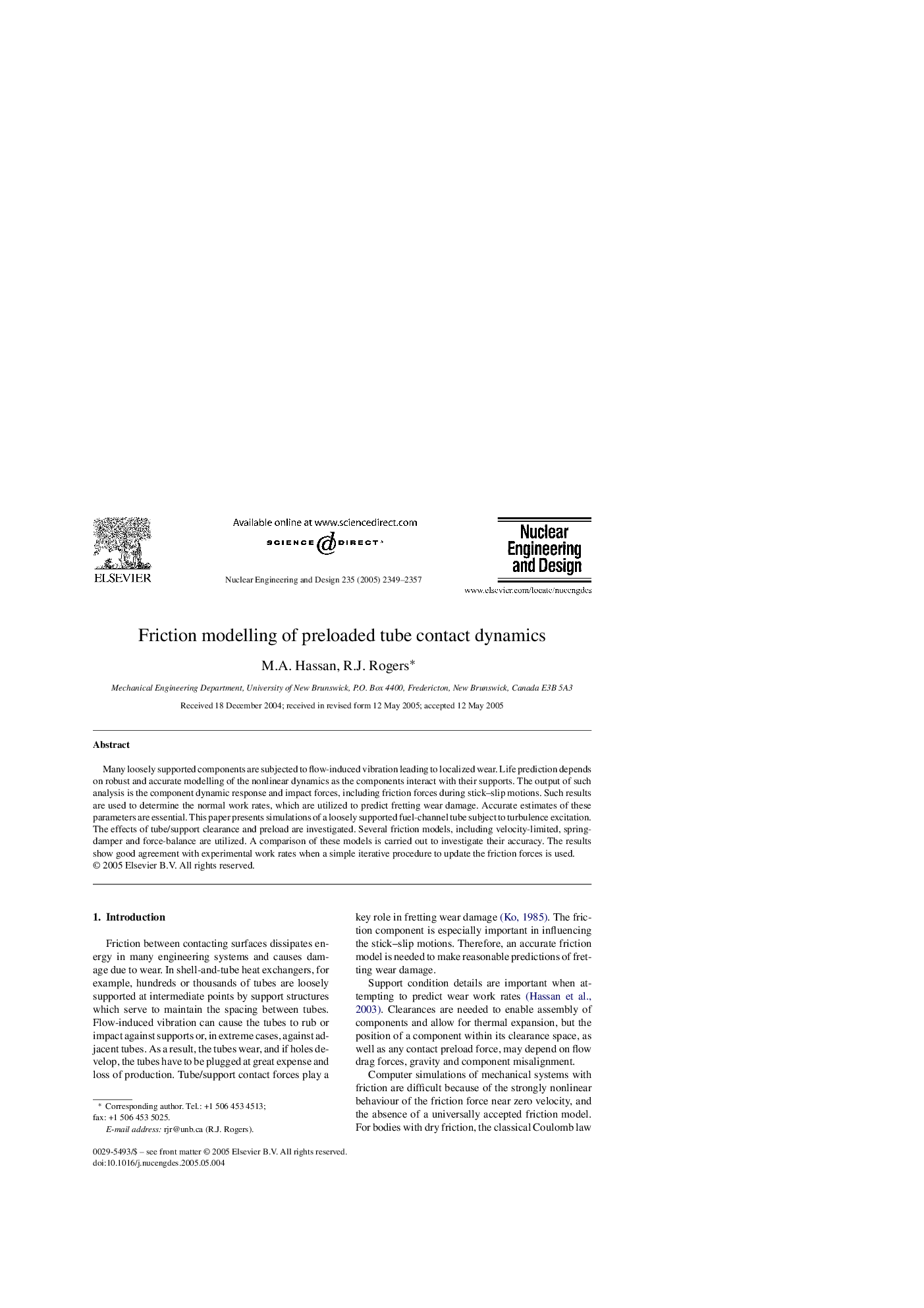| Article ID | Journal | Published Year | Pages | File Type |
|---|---|---|---|---|
| 299225 | Nuclear Engineering and Design | 2005 | 9 Pages |
Many loosely supported components are subjected to flow-induced vibration leading to localized wear. Life prediction depends on robust and accurate modelling of the nonlinear dynamics as the components interact with their supports. The output of such analysis is the component dynamic response and impact forces, including friction forces during stick–slip motions. Such results are used to determine the normal work rates, which are utilized to predict fretting wear damage. Accurate estimates of these parameters are essential. This paper presents simulations of a loosely supported fuel-channel tube subject to turbulence excitation. The effects of tube/support clearance and preload are investigated. Several friction models, including velocity-limited, spring-damper and force-balance are utilized. A comparison of these models is carried out to investigate their accuracy. The results show good agreement with experimental work rates when a simple iterative procedure to update the friction forces is used.
